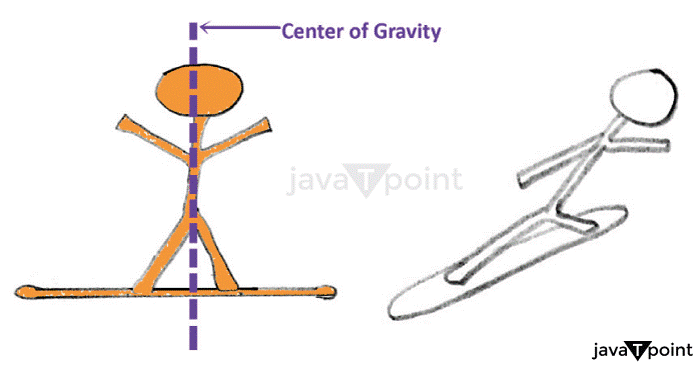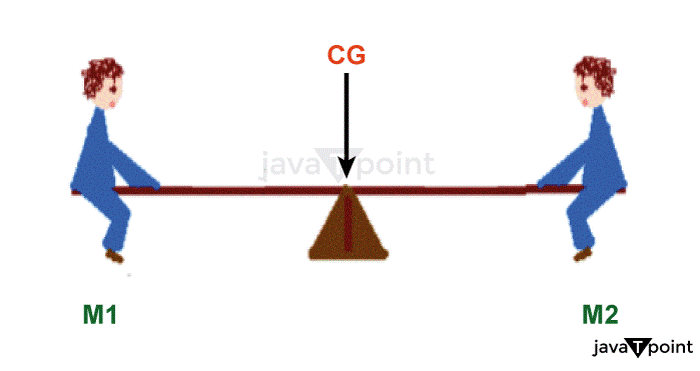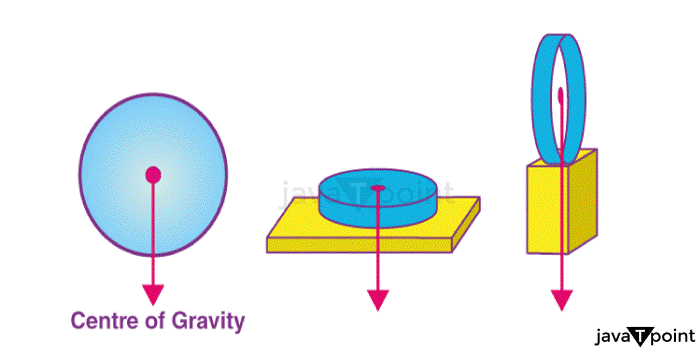Center Of Gravity DefinitionUnderstanding how objects act and move in space entails knowing the center of gravity, a key topic in many domains, including physics, engineering, and many more. The point in an item or system where the weight is uniformly distributed and no net force or torque is exerted on the object is generally called the center of gravity. 
It might be beneficial to think about a few distinct facets of the center of gravity concept to have a deeper understanding. It's crucial first to comprehend what weight and mass are and how they relate. Whereas mass measures the quantity of substance inside an item, weight measures the force of gravity acting on the thing. An object's weight is determined by its mass and the gravitational field intensity it is in, yet, an object's mass is constant regardless of location. The object's surface area that is in touch with the surface bears its weight when it is put on it. The center of gravity is where the weight is evenly distributed or appears to be concentrated. If an item is symmetrical, its geometric center will serve as its center of gravity. The center of gravity may be in a different place if the item is asymmetrical or irregularly formed.Since it may be used to forecast how objects behave when subjected to external forces, the center of gravity is a key idea in many domains. For instance, knowing the center of gravity is crucial for designing stable buildings and vehicles in engineering and design. For example, a vehicle with a high center of gravity may be more likely to topple over while making rapid curves or abrupt stops. A structure may be more vulnerable to damage from earthquakes or other natural catastrophes if its center of gravity is too high. The center of gravity is crucial to understanding how things move and react to outside influences in physics. The center of gravity of an item travels along with it when it is in motion, and how that object reacts to outside forces relies on how those forces are applied in relation to the center of gravity. The center of gravity will change if an item is struck off-center, for instance, and the object may rotate or spin as a result. Regarding military strategy and tactics, the idea of the center of gravity is crucial. The vital point in an enemy's system that, if destroyed or neutralized, would cause the entire system to collapse is sometimes described as the center of gravity in warfare. For instance, the enemy's supply chain or successful communication can be theorized as the center of gravity in a military operation. A military force can strategically outperform its adversary by focusing on and neutralizing the center of gravity. 
History of StudyThe historical significance surrounding the idea of a central gravitational point can be traced back to ancient Greek philosophy, which culminated in remarkable research from influential scientists such as Aristotle and Archimedes. In mathematical terms, it was Archimedes who is accredited with defining- what we now recognize today- as 'the center of gravity'.Thereafter, progress continued to be made concerning this fundamental notion, especially within astronomy and mechanics, throughout periods like The Middle Ages by great scholars, including Ibn al-Haytham and Johannes Kepler. The idea of the center of gravity grew significantly throughout the Renaissance in physics and engineering. Bridging natural forces demanded a deep understanding of structural integrity that Leonardo da Vinci sought through experimental analysis of an object or system's center of gravity. Since then, scientific inquiry has continued such that seminal thinkers like Isaac Newton and Pierre-Simon Laplace developed predictive mathematical models elucidating a greater comprehension of the properties surrounding this fundamental force - with evolutionary consequences for engineering strategy via fields such as aviation design within military applications. A fundamental principle that continues to garner significant consideration across different disciplines is the center of gravity. In physics and engineering, experts rely on this concept when designing stable structures or developing transportation means. On another note, military strategists recognize centrality as a vital determinant for mission success or failure. Overall, scholars adhere to refining our knowledge regarding how objects move around in space by impacting our understanding of centrality throughout human history. Many real-world applications of the center of gravity theory exist across different disciplines. These are a few instances:
Several disciplines and areas of study use the notion of the center of gravity as a key building block. The following are some of the key fields where the center of gravity is studied:
The idea of the center of gravity, which represents the location where an object's weight is uniformly distributed in all directions, is crucial to understanding physics. Numerous phenomena related to the center of gravity have been discovered due to research into them. The following are a few of the main phenomena: The stability of an item is greatly influenced by its center of gravity. The item is stable when its center of gravity lies inside the base of support. The object can topple over if the center of gravity is outside the base of support, though.
Several significant phenomena related to the centre of gravity have been found via research on it. Designing stable, symmetrical, and effective structures and systems requires understanding these phenomena. Science, engineering, sports, and transportation applications use information about the center of gravity. Below are a few instances of information on the center of gravity:
Numerical Representation Of the Center Of GravityThe exact item or system being studied determines the specific numbers associated with the center of gravity. A point often represents the average location of all the individual weights in the system or the center of gravity. The center of gravity can be represented using the concept of coordinate lengths on the axis system.The majority of the time, an object's center of gravity ends up being that spot. In order to determine the location of an object's center of gravity or mass distribution, one must first consider its homogeneity. For example, in a homogeneous sphere where its density is uniformly distributed across all points on its surface and within its volume, Its center of gravity must logically occur at some point within this homogeneity - specifically at (0, 0, 0) within a three-dimensional coordinate system. By extension, from this concept comes another familiar heuristic: for universally uniform rectangular prisms with dimensions L x W x H, The Centre of Gravity lies precisely on the geometrical midpoint or vector space coordinate (L/2, W/2, H/2). Mathematical formulas or physical observations can be employed to locate the center of gravity in more intricate objects and systems. For instance, when determining the center of gravity of an airplane, a set of weight and balance calculations that account for the weight and positioning of various components as well as fuel loads, are generally used. The center of gravity point is then represented as a percentage of the mean aerodynamic chord (MAC), a standard wing distance. 
ConclusionThe center of gravity is a key idea in various disciplines, including physics, engineering, military planning, and tactics. Knowing an item or system's center of gravity may assist in anticipating how it will respond to external forces, which can aid with design choices and tactical preparation. The study of gravity may seem to be simple theoretically, but this has a significant impact on the practical parts. The concept has a very significant impact on various mission and project that involves the knowledge of this concept.
Next TopicDefinition Of Liquid
|
 For Videos Join Our Youtube Channel: Join Now
For Videos Join Our Youtube Channel: Join Now
Feedback
- Send your Feedback to [email protected]
Help Others, Please Share










